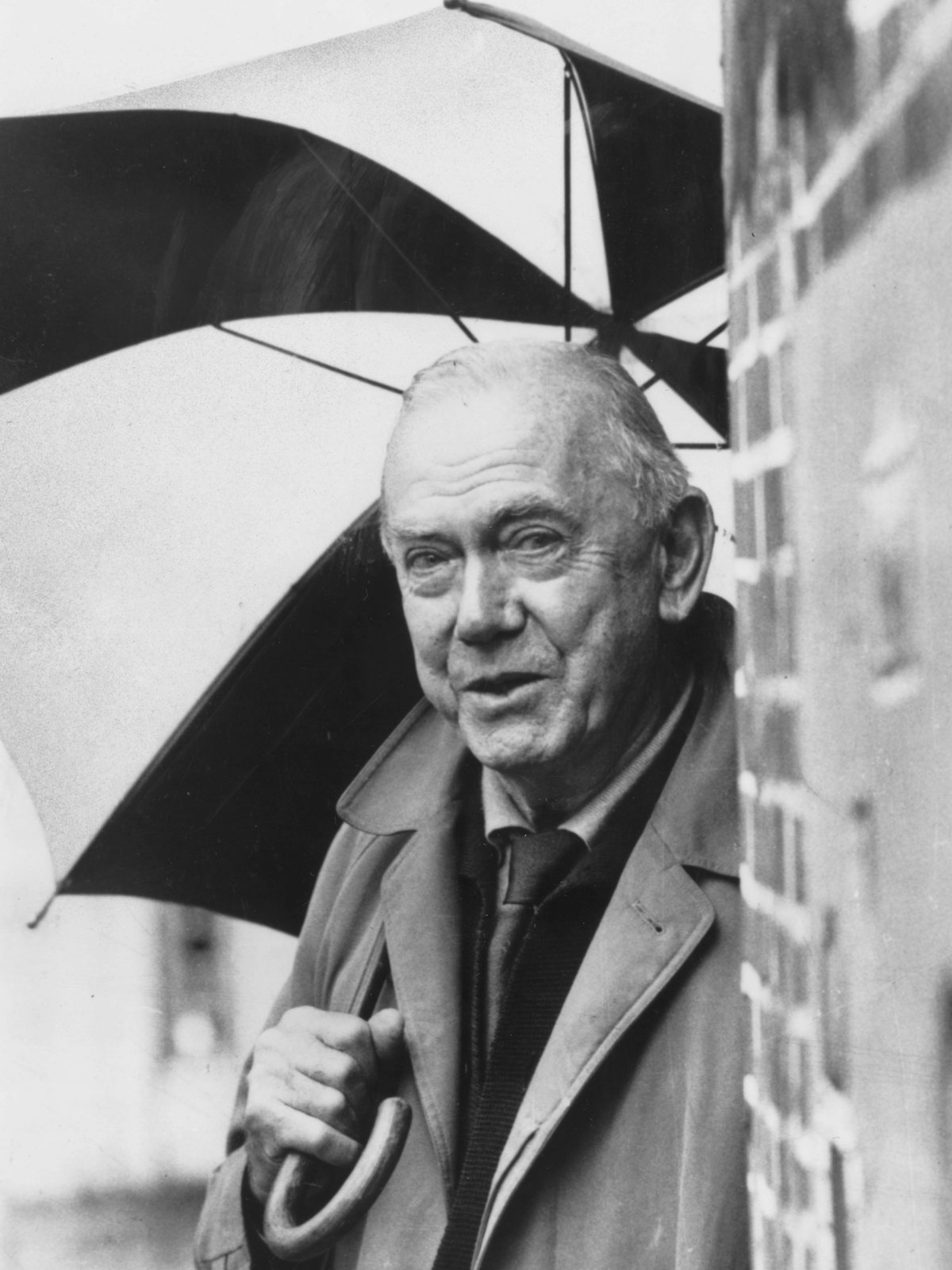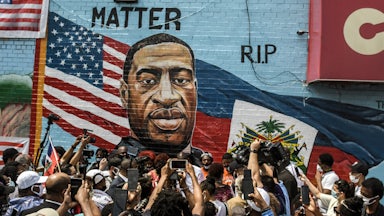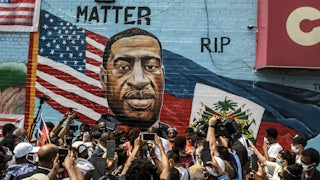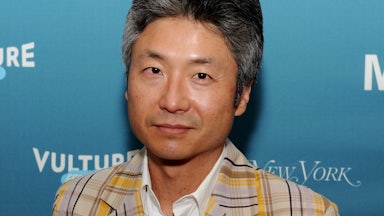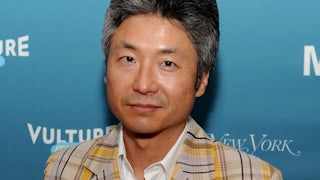The last novelist who acted like he might save the world may have been Graham Greene. He belonged to a generation of writers who might not always share the same political opinions but who supported many of the same causes: defending jailed dissidents, protesting illegal wars, and challenging the unfairness (or even stupidity) of censoring great books. He wrote a novel, The Comedians, and developed its film adaptation with the intention of helping to “isolate” Haiti’s Papa Doc Duvalier, who contemplated having Greene assassinated in retaliation. At one point, Greene was so celebrated that the South African State Department asked him to negotiate the release of a kidnapped ambassador in El Salvador. (Greene eventually came to an agreement with the rebels, but the ambassador was killed anyway—for reasons that were never fully understood.) By the end of his life, he was known as an international public figure who partied with Capote, Yoko Ono, and Kissinger, as much as a writer of entertaining, always absorbing novels, short stories, screenplays, and essays.

In the final decades of his life, Greene defied the Cold War logic of his times by befriending politicians and intellectuals from across the political spectrum—Fidel Castro in Cuba, Omar Torrijos in Panama, Jorge Luis Borges in Argentina, R.K. Narayan in India, Vaclav Havel and Josef Skvorecky in Czechoslovakia, and Pablo Neruda, when he was acting as Chile’s ambassador to France. In the early 1950s, Greene wrote open letters of support for Charlie Chaplin, who had been targeted by McCarthy; and he publicly confessed his brief Oxford-era membership in the Communist Party to challenge U.S. immigration over the McCarran Act. All over the world, people wanted to know what Greene was doing, even when they weren’t reading him.
When Kim Philby was reviled as a mole for the USSR at MI6 (where he had been Greene’s drinking buddy and supervisor), Greene was the only notable British figure to visit the disgraced Philby in Russia, or attend his funeral in 1988. As Beatrice Severn declares near the end of Greene’s funniest novel, Our Man in Havana (1958): “I don’t care a damn about men who are loyal to the people who pay them, to organizations.… Would the world be in the mess it is if we were loyal to love and not to countries?” It’s hard to think of any similarly productive, commercial novelist today who speaks so vigorously against religious and political pieties.
Richard Greene’s book The Unquiet Englishman is the third major biography of Graham Greene in 40 years and provides the most readable, balanced approach so far to both a complicated life and an intensely enjoyable body of work; it makes use of newly available letters, diaries and recollections concerning Greene and his closest friends. It is neither as excessively detailed as the Norman Sherry biography released in three volumes between 1989 and 2005, nor as combative as Michael Shelden’s 1994 portrait, Graham Greene: The Man Within. (Shelden was unforgiving about Greene’s loyalty to old friends such as Philby and the novelist Norman Douglas, who was charged with indecent assault.) The Greene who emerges here rarely stayed in one place for very long and was continually dissatisfied with the world that he witnessed changing convulsively around him.
Born in 1904 at the Berkhamsted boarding school where his father was house master, Greene quickly grew accustomed to living secret lives, especially through the books that absorbed him, such as John Buchan’s spy stories (most famously, The Thirty-Nine Steps), and while exploring the lost kingdoms of H. Rider Haggard (King Solomon’s Mines and She). Then, almost inevitably, considering the pathologies of Edwardian-era boarding schools, Greene was soon being bullied, tormented, and co-opted by his fellow schoolboys; and he later compared the cruel “finesse” of his tormentors with the major figures in geopolitical conflicts. They made him feel as if he was always betraying someone, especially his father. He grew depressed and withdrawn, and was diagnosed as manic-depressive. Perhaps to challenge his deep sense of failure, he indulged in suicidal games, and claimed to have played Russian roulette several times with a gun from the family cupboard; he even compared the “minute click” of the chamber against his ear with “a young man’s first successful experience of sex” (though later revised the story so many times that it may not have been entirely true). Even if he hadn’t come close to suicide with a gun, he was soon relentlessly and unambiguously acting out suicidal impulses through travel.
Throughout his life, he set out for treacherous and dangerous places—to investigate Firestone and the British government’s involvement with forced labor in Liberia (where he nearly died of fever) to leper colonies in the Congo Basin to research A Burnt-Out Case, to Haiti in the midst of political terror, to central America, and to some of the most troubled, anti-Catholic regions of Mexico. He was quick to make new contacts with what his own government might consider unsavory people, such as members of Sinn Fein and the Free State in Northern Ireland, and to take on risky tasks, like ferrying communications between anti-Fascist groups in Germany and France. Even before he turned 20, Greene was a tough man to pin down—either on a map or as a person. The notion of “identity” was never comfortable for Greene, and whenever he sensed the shadow of a firm identity descending upon him, he went looking for the nearest way out of it. (Ways of Escape was, appropriately, the title of his second autobiographical memoir, in 1980.)
He was still an atheist when, at 20, he fell in love with a young poet and devout Catholic, Vivienne Dayrell-Browning; he subsequently accompanied her to his first Catholic service, deluged her with multitudinous letters of affection (everything about Greene was multitudinous), and, in order to marry her, converted. Although he spent the rest of his life known as a “Catholic” writer, he wore that designation loosely. He frequented brothels; he soon left his young wife and children to live in London with Dorothy Glover, who illustrated several of Greene’s books for children; and then he embarked on a long, complicated series of affairs—most notably with Catherine Walston, a married woman who provided perhaps the most both intensely happy and deeply unhappy relationship of his life. (He was unhappy when she was not with him and desperate to see other women when she was.) Both Catherine’s personality and her open marriage provided models for the relationships in one of Greene’s greatest novels, The End of the Affair, in 1951.
He often maintained significant relationships with more than one woman at a time; he drank heavily and continuously and moved easily from one profession to another—as a journalist for The Times of London, as a film and book critic for The Spectator, as an editor at both Eyre & Spottiswoode and Bodley Head, and as a novelist producing roughly a novel every year or two. (He insisted on sitting down every day and writing at least 500 words of fiction, which he kept track of in a diary.) In 1941, through his sister, he procured a job in Sierra Leone mining intelligence for MI6, with the code name Agent 59200 (the same as Wormold’s in Our Man in Havana). When that profession grew too boring and predictable, he went to Hollywood and wrote movies.
The best part about being a novelist, Greene once told a friend’s teenage son at a party, “is that you can spy on people. Everything is useful to a writer, you see, every scrap.” And as his friend and fellow spy-novelist John le Carré recalled, Greene always felt a “sense of alienation, of being an observer within society rather than a member of it.” Constantly roving, Greene wrote successful novels, short stories, screenplays, travel books, and plays from the points of view of everyone he met or could imagine: a Jewish businessman selling currant sweets; a lesbian journalist and a chorus girl in Stamboul Train; a professional killer with a harelip in This Gun for Hire; and a teenage Catholic psycho-gangster named Pinkie in Brighton Rock. And then, of course, there are the countless spies and their accomplices, such as the clumsy and deeply loving Wormold in Our Man in Havana, who signs on with MI6 and snaps blurry photos of the insides of vacuum cleaners to convince his London bosses that he has discovered a sophisticated new weapon system. Every Greene spy is an exercise in love—whether it is Wormold’s devotion to his spoiled (and awful) daughter, Milly, or Maurice Castle’s passion for his Black, South African wife in what may be Greene’s best (and certainly my favorite) novel, The Human Factor (1978). According to the morals of Greene’s fictional universe, you can betray your country—easy-peasy. But if you betray the people you love, you deserve the worst that can happen to you.
Even the titles of Greene’s books testify to an almost unendurable subjective human struggle: The Man Within, It’s a Battlefield, Journey Without Maps, The Lawless Roads, Monsieur Quixote, A Burnt-Out Case, and so forth. Greene saw geographical spaces in terms of spiritual struggle; and while he often dramatized the horrors of political and military conflicts, his primary novelistic aim was to document the deeper conflicts occurring within the subjective life of his characters. After many years of increasing commercial success as a novelist, Greene’s “breakthrough” book, The Heart of the Matter (1948), achieved international fame by appealing to Catholics who found in it an expression of living in a post–World War II world where God didn’t seem to reward the faith they placed in Him.
Despite his appeal to Catholics, Richard Greene (who is no relation to the novelist) writes, Graham Greene was more Manichaean than Christian: “[H]e could not take the idea of a devil very seriously, and if there was evil in the world God must be in some sense answerable for it.” If there was a God, he believed, then it was a God who “had placed human beings in unbearable circumstances.” To a large extent, Greene’s cynicism about the world—and the sufferings of humanity—came close to nihilism, or even a form of Ligotti-like anti-natal philosophy. As Scobie tells himself in one of The Heart of the Matter’s most troubling scenes: “Point me out the happy man and I will point you out either extreme egotism, evil—or else an absolute ignorance.” Life is awful, Greene often said; but when it came to art—such as his own daily production of beautiful paragraphs and scenes throughout most of his life—well, at least art could make it seem worthwhile.
The least interesting character in Greene’s substantial literary output is Greene himself; for while even his most craven, fault-ridden characters—such as the unnamed “whisky priest” in The Power and the Glory—always drive compelling stories, the Greene persona in his travel books and autobiographies floats passively on the current of events without much urgency. On his deathbed, when the partner of his late years, Yvonne Cloetta, asked him if he wanted to call in his priest for last rites, Greene reportedly replied: “You decide.” They were the most appropriate last words Greene could have uttered.
Nobody saw politics and power with greater human clarity than Greene; and it’s hard to read a single paragraph of his tight, controlled, angry, and always alert prose without underlining passages to reread again later. In The Lawless Roads, he wrote, “After Mexico,” where he traveled in the late thirties “I shall always associate balconies and politicians—plump men with blue chins wearing soft hats and guns on their hips. They look down from the official balcony in every city all day long with nothing to do but stare, with the expression of men keeping an eye on a good thing.” Greene saw things that readers hadn’t yet seen for themselves; but once Greene showed them the things they should see, readers couldn’t stop seeing them.
Greene famously divided his works into “entertainments” and “serious fiction.” The “entertainments,” such as This Gun for Hire (1936) and The Ministry of Fear (1943), were thrillers designed to indulge smart readers, whereas the “serious” novels did not tidily resolve themselves. Often, it’s not easy to tell Greene’s two types of novels apart—they uniformly possess weight, deep texture, emotion, absurdist comedy, and compelling characters. In fact, the only thing that really distinguishes his “entertainments” from his “serious” novels is the extent to which the characters suffer. And in the serious novels, they suffer a lot.
When Castle, after years of subterfuge designed to protect the wife he loves, is exiled to Russia without her, it is hard not to feel his pain and uselessness; but when Raven—the disfigured hit man of This Gun for Hire—dies, it’s hard to feel anything but relief. Only the “good” suffer in a Greene novel; that’s because, in Greene’s universe, the “bad” never feel remorse, guilt, or the capacity to love. His most unregenerate characters are innocent of self-reflection, like Alden Pyle in Greene’s prescient novel about American “do-gooders” in 1950s Vietnam, The Quiet American. A CIA op trying to save a nation of people from making their own decisions, Pyle is innocent, handsome, and wants to do well. Yet, like many devout Americans who proudly do unto others what they don’t want done unto them, Pyle causes terrible human damage. “Innocence,” the narrator, Fowler, observes of Pyle, “is like a dumb leper who has lost his bell, wandering the world meaning no harm.” As the 2002 film adaptation made perfectly clear, this deadly combination of American innocence and evil looks a lot like Brendan Fraser.
No other writer moved so effortlessly between films and fiction. Greene wrote novels with a movie camera’s eye—showing his readers what his characters see, in the sequence in which they see it. (The opening of This Gun for Hire is a textbook example of perfect cinematic technique; nobody ever used the semicolon better to bite off each second of a character’s sensory experience.) At the same time, he wrote films with a novelist’s sense of human complexity, which is probably why he dismissed Alfred Hitchcock as a “clown.”
Holly Martin’s problem in The Third Man is that he genuinely loves his boyhood friend Harry Lime, even though he suspects that there may be depths to Harry that he shouldn’t love at all. Harry “was a wonderful planner,” Rollo explains in the novel, but “I was always the one who got caught.” This complexity of personal affection for evil people would never have interested Hitchcock, just as Greene never succumbed to using a meaningless MacGuffin to set his stories rolling. Instead, The Third Man is driven by the real human tragedy of war profiteers in Berlin selling fake antibiotics to sick people (including children). Greene’s films are all tilting Carol Reed camera angles and swerves of light and conjunctions of street and alleyway where people appear and reappear as someone they might actually be; or their conspiracies emerge through the fog and smoke of bombed cities, as in Fritz Lang’s visually fraught version of The Ministry of Fear. For Greene (even though he loved popular fiction and film), the heart of a story wasn’t a clever technical contraption. It always concerned perilous attitudes of perception.
Greene wrote about a world we still live in, where horrible crimes are committed every day by beaming politicians with good teeth, aided by their government-conscripted thugs and double agents. And more likely than not, Greene told his stories through the perceptions of people who were either bad or not so good as they (or we) might wish they were. Deeply flawed people who were, in fact, much like Greene saw himself to be.
After 86 years of intellectually intense living (when he wasn’t writing books, he seemed to be reading them), Greene died in 1991 without saving the world, but after going a long way toward saving himself. He settled down with one woman in one home in Antibes, France; his depressions and suicidal impulses seemed to withdraw a little, and those who knew him said he grew less angry. And while his final, short novels grew weaker with age, they still provided many beautiful passages. For those of us who love great fiction, those passages will surely endure—at least until the world doesn’t.
